Sequencing a decolonised curriculum: using Picower’s six elements
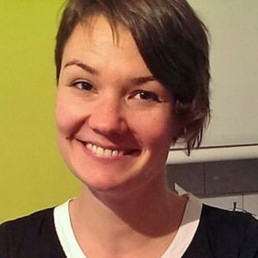
Written by Terra Glowach
Lead Practitioner for literacy and decolonising the curriculum at Cathedral Schools Trust in Bristol
I entered the classroom with the conviction that it was crucial for me and every other student to be an active participant, not a passive consumer…education that connects the will to know with the will to become. ― Bell Hooks
One mistake I’ve made over and over again: teaching traumatic events in history without understanding the need to embed them within a wider, and more empowering, social-historical narrative.
Picower’s work on the six elements of social justice has helped me understand the importance of sequencing, so that
- students do not internalise the trauma of these events, and /or
- see these events as the fault or inevitable condition of the victims’ existence
- nor do these events define a people as powerless, voiceless, or lacking agency
Picower’s work is open source so that teachers can access it. And unlike most EEF research, it is qualitative – looking into case-studies of elementary curriculum sequencing – to examine the ‘how’ and ‘why’ of teaching material that addresses social injustice. The American elementary context is only problematic in the respect that Secondary teachers may need to collaborate across disciplines whereas Primary teachers have more flexibility within their own practice. This limitation aside, Picower’s work is game changing for middle and senior leaders with curriculum development responsibilities.
Her six steps for sequencing material related to social injustice are as follows:
- Self love and knowledge: “provides students with the historical background knowledge to recognize the strengths and resiliency of their communities.”
- Respect for others: “students gain respect for the history and characteristics of people different from themselves. By building on the natural empathy of children, teachers encourage students to care about “unfair” conditions that have affected others.”
- Issues of social injustice: “a critical examination of how identities impact people’s lived and material conditions. Students explore historical and current issues of social injustice, allowing them to identify “isms” and to decide whether they find these “fair.”
- Social movements and social change: “teaches students about how people have fought against oppression through social movements. Students learn that things don’t have to be how they are; unfair conditions can be changed, and students can contribute to that change.”
- Awareness raising: “students engage in activities that increase the awareness of others in their community about the social issues they are studying.”
- Social action: “students have the opportunity to experience what it means to struggle for justice by engaging in social action themselves.”
At Bristol Cathedral, our Decolonising Hub is looking at how we can work cooperatively across all disciplines to ensure these six points are used in an order which empowers students to change their world for the better. We noticed that no 1 & 2 are often combined when we teach any of our subjects as global disciplines. History, English, Geography, Citizenship and PSHE seem best placed to address 3 and 4. Art, Drama and Music seem well placed to contribute meaningfully to no 5 and 6. This year our goal is an exhibit that celebrates student work across the curriculum following Picower’s six steps.
As an example of how to do this in one discipline, our History department addresses this sequence in KS3 by teaching Africa Kingdoms in year 7, the Bristol involvement in the slave trade in year 8, and the Haitian Revolution in year 9. Students first learn about the academic, artistic and economic achievements of African kingdoms before learning about how Black Africans were exploited – so the limited Euro-centric narrative of the white man’s burden is robustly challenged. We also consider the cost of choosing oppression / exploitation over symbiotic trade and collaboration.
With the Haitian Revolution, students understand how an oppressed people were able to overcome tyranny. Black people are not simply represented as unfortunate victims saved by British emancipation, but as having agency and preceding British emancipation with their own by three decades.
To apply a micro-lense to sequencing, I’ve used Picower to think about how I present disturbing context for English texts in single lessons. For example, in the EMC’s excellent collection Diverse Shorts, the story “Brownies” by ZZ Packer addresses white beauty standards and the impact on young Black girls in 1980s USA. I use a video of the doll test to help students understand and empathise with the Black characters in the story.
This video shows several Black children point to a white (as opposed to a Black) doll when asked which is beautiful and good. The moment when Black children each identify themselves as the Black doll afterwards is deeply upsetting, and could serve to normalise these attitudes further if not preceded by content which shows this behaviour to be the likely effect of racist representations in mainstream media – and therefore in error.
So this year I started with the Black Panther’s Black is Beautiful movement in the 60s, and we looked at several examples of Black beauty across film and art (Step 1: Self Love / Knowledge and Step 2: Mutual Respect). Once we had looked at the qualities of these examples and why they were so successful in influencing style, we then discussed their awareness of these movements, and the extent to which Black beauty is mainstreamed in TV, film and advertisements. At this point, I showed the doll test (Step 3: Social Injustice).
Students were just as visibly moved by the doll test as in previous years, if not more so. But in our discussion afterwards, there was less a sense of defeat and pity and more of an understanding that feelings of inadequacy are down to mainstream media, and how race is represented. If Black beauty and excellence were represented more in the mainstream, the doll test might yield different results.
This level of thinking is not only ‘top band’ in terms of contextual analysis, but empowers students to challenge unfair and harmful narratives on the basis that there are better, richer narratives.
Many curriculum designers now recognise the benefits of sequencing knowledge using narratives for long-term memory (i.e. evidenced learning). But Picower’s work is also needed to unlock the agency of students to use that knowledge for meaningful social change.
Inclusion and learning disabilities
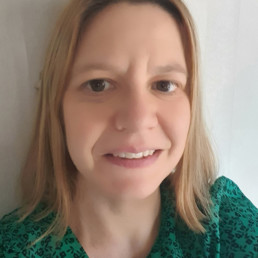
Written by Sara Porter
Biology tutor and an associate assessor for the T level in Lab Science
I am currently researching 18th century women and their role in society. In the 1700s a woman was seen as an inferior being to men. She was not seen as capable of rational thought, however, if she was brought up in a forward-thinking radical household with access to learning, she could carve out a role as a female author. Ironically, this situation was faced by people with learning difficulties in the 1960s. Until 1971 people with learning disabilities were labelled as unteachable and very often institutionalised in specialist asylums. They were not seen as people with any right to education and some of historical medical terminology makes for unpleasant reading. For me this is personal, as my daughter has Down syndrome. Kara’s certainly intelligent and at 7 her reading ability on sight words is that of her peer group. There are differences for example her numeracy is probably like that of a four year old and her speech is not fluent but we certainly have no difficulty getting her message. Maslow’s hierarchy of needs is certainly met.
(http://www.open.ac.uk/health-and-social-care/research/shld/timeline-learning-disability-history).
Inclusion is a strange word in some respects as it has many different spheres. A child with a disability in a classroom could be included but if the child is not learning and not participating then is its tokenism. When my daughter was two, we attended a farm party. My daughter could walk but could not yet talk. She saw her friends feeding the animals but because she could not communicate her needs, she was excluded. At the hospital the same week, we went for her annual eye check using animal pictures. Since her birth she had used Makaton, so she could sign the different signs for what she could see. There were no additional resources but there was specialist knowledge.
Within nursery and primary education I’ve been very determined to push the barriers back as far as I can. It has helped that my background is education and I quickly learnt the names and emails of the specialist experts in this field. The best advice someone gave me was to make sure you get to know your child’s key worker, keep an open dialogue and volunteer at the school. The school learns your name and you get a deeper understanding of the workings of the building. The staff within all my daughter’s education settings have excelled at meeting her needs. I researched as thoroughly as I could to find the places which had an open mind and would acknowledge her value.
As a parent of a child with additional needs, you have to fight for help and the fight has not been helped by austerity. The resources have reduced, and you have to research carefully in order to navigate the funding system. Mainstream education is available to children with additional needs but it;s vital you have a document called the EHCP – which guarantees funding till the child is at least 18. I;ve carved out a few articles in the Times educational supplement with this battle and still have my solicitor on speed dial. It’s not for the faint hearted as LEA are under horrendous pressure to meet demand on very limited budgets. Families form tight knit groups to help each other out and I have seen the struggle from all sides. It’s very similar to the battles faced by women in the 1700s and it is your support structure which can help you overcome these barriers. Lockdown has only made this situation more extreme and there is a feeling that much of the educational ground won through years of legislation has been lost.
On a positive note the role models and expectation for my daughter have never been higher. Technology and research is bringing in wonderful opportunities and choices. Her class adores her and she is accepted as Kara. We have just been playing with her friends on the playground and she’s going to inflict more biff and chip books on me tonight. When inclusion is done properly just like 18th century women it can open doors and allow people to blossom. It just needs funding and support.
Diversity, Disclosure and Invisibility
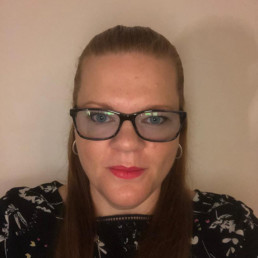
Written by Paula Tankard
Headteacher and has worked as a SIP for local schools
Diversity
Diversity is often referred to in terms of ‘people who look different’. However, not all diversity is visible. This think piece is about a different side to diversity, one that is less visible. I believe that more conversations about diversity and inclusion have happened in schools in the past term than ever before – and this is great. People know more about the Equality Act (2010) and are implementing the recommendations. Many educators can name all of the protected characteristics listed in the act. There are nine, and it is against the law to discriminate against someone because of:
Marriage And Civil Partnership
I am a teacher and headteacher and I also happen to be gay. When a protected characteristic is visible you don’t have to include this in your introduction to various stakeholders. However, when your characteristic is invisible there is a disclosure dilemma.
Disclosure
When do I say it when I introduce myself ‘Hello I’m the new headteacher and I’m gay’? Clearly not, so how do I do it? Do I rely on staff room gossip to do the job for me? A casual comment to the ‘right’ person at 8:30am could mean that the whole school knows by playtime. Each time I have done it differently so clearly there is no right or wrong way and it is up to each individual to find a way that works for them. For both of my headteacher roles I told the chair of governors first and then we agreed a plan about when and who I would tell. Then I spoke to the leadership team in the first meeting and they mentioned it to others.
Who do I tell? Do I tell staff but not the parents? Should I tell the children? Some might say ‘well it is none of their business’ and to a certain extent I agree. In both of my headteacher roles it has been left up to me who I want to tell and in both cases the staff were told and as there were staff who were parents so most of the parents were aware but the children were not specifically told. I had an open discussion with the chair of governors about this decision, I explained that in an appropriate situation if a child asked that I would not lie and would talk to the child in an age appropriate manner. When I was class based, I worked for heads who put a clear ban on any staff talking about their life outside of school with any of the stakeholders, there was even a ban on personal photographs visible in classrooms. Other heads have said it is up to individual staff what they want to reveal.
Early in my teaching career I was specifically told by the deputy head that I could not reveal my sexuality to any pupils or parents from the school. This was said because ‘Parents would not want me to be in the classroom when children are changing for PE, as I would see girls in their underwear.’ I did question if they thought being a lesbian was the same as being a paedophile, although this question wasn’t answered and I received an apology, it had still been said. The lasting effect of this statement was a reluctance for me to tell anybody at work who I am.
Invisibility
There are many characteristics that are clearly visible, some that are sometimes visible and some that are completely invisible. So if you have one of the invisible characteristics you have to tell people for them to know.
It has been my experience that leaders and governors have no clear plan on how to manage this. They have perhaps not thought through who and when staff should reveal their invisible protected characteristics to, and are somewhat hesitant to speak to staff about it. This may be because of the fear of offending somebody and being accused of homophobia and I understand that. I would have preferred to have been asked about it before I started work so that we were all clear.
It would have prevented a very awkward situation for me. Before I moved into leadership I taught Year 6, during a PHSE lesson I was asked if I had got married in the holidays, to which I replied yes. The child then asked me was it to a man, or a woman? I was flummoxed. Not by the answer but by – what am I allowed to say? If this has been discussed before it would have prevented my jumbled answer of yes and then me having to go and see the head to explain that I had just ‘outed’ myself to my class.
What now?
I have listened to various facilitators and trainers talk to school staff and leadership teams to say ‘You need to have people who look differently on your SLT, staff or governing body’.
‘You need visible role models for the children in the school from Black, Asian and Minority Ethnic communities’. I do not disagree, and have said the same thing myself. However, I wonder if the focus on ‘look’ means that other protected characteristics are overshadowed?
So I ask that when you discuss diversity in school, during assemblies, staff meetings and governor meetings, please talk about people who are different not just about those who look different. Make sure you include all protected characteristics in your presentation and discussion.
As leaders have a plan to support staff with invisible protected characteristics. Talk to them, guide them with their inevitable disclosure dilemmas and support their decisions.
Why We Need More Diverse Texts in Primary Schools
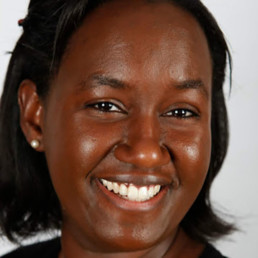
Written by Fabia Turner
Over ten years’ combined experience in education and educational publishing and a member of the Critics of Colour Collective
I first realised I wanted to make books when I was five years old. I’d just bought Mr Greedy by Roger Hargreaves, from a stall in my school’s lobby. The purchase price was a mere 10 pence, and in that brief exchange of money for books, my life changed forever.
As I proudly held that little paperback, I experienced what I can only describe as sensory joy! The pristine shiny cover, the whiff of glue/ink on every page turn plus the satisfying creak from the spine as it inevitably yielded. I knew right then the magical process of creating books was a thing I must be part of.
The problem was I was Black, and Roger Hargreaves was not. Neither were Jean and Gareth Adamson who created the Topsy and Tim series…or Roald Dahl, Eric Carle, Shirley Hughes, Helen Creswell, Ian Serraillier, Michael Bond, Edgar Allan Poe, or Henry Wadsworth Longfellow. These writers dominated my childhood experience and although their texts undeniably developed my literacy skills, they simultaneously dampened my ambition to work in publishing. Lack of exposure to diverse literature in my formative years meant I believed only white people were skilled enough, clever enough, and powerful enough to write and publish books.
It wasn’t until GCSEs, when a radical history teacher introduced me to Toni Morrison, that I was finally exposed to Black authors. I devoured Morrison’s books, but the damage had already been done. My early literary experiences were deeply ingrained in my psyche and I had zero confidence in my abilities as a creative.
Later, my A-level English teacher begged me to apply to Oxbridge, but fear of failure took over, and I refused. After all, in class we’d studied Shakespeare, Hughes, Wordsworth, Larkin, Chaucer…you see where I’m going with this! My parents didn’t envisage a publishing career for their Black daughter either so, eventually, I became a teacher, and the years rolled by. It took 25 years, from the time I bought Mr Greedy, to believe I was just about good enough to attend a publishing interview—and to my complete shock, I got the job!
I tell you all this so you understand the real impact of limiting access to multicultural resources on Black children’s outcomes. The literature we are exposed to when young plays a huge part in shaping our view of ourselves and the world around us. Publishers, educators, and parents need to be vigilant and discerning about the range of texts available to young readers to ensure they develop the self-confidence, self-worth, and drive to pursue their deepest desires.
Which leads me to my next point: quality not quantity. Some Black books hitting the market, from white and Black authors, may check the diversity box but do not meet the high standards required for whole-class teaching. Teachers should not feel pressured to include Black texts—especially those written by celebrities—if they are not up to scratch. (I won’t name names!)
As we’ve always done, regardless of the author’s ethnicity, texts need to be scrutinised for their suitability, otherwise we’ll just start pedalling backwards! The recent misjudged illustration, discovered by a student in one of AQA’s psychological textbooks, points up the need to evaluate all aspects of educational resources.
So far on my book quest, I have encountered some inspirational like-minded teachers who are working hard towards change for the better. I would like to shine a light on some of them:
Calder Valley Books for Change: Amazing early years teacher, Ciara Sturges, has organised a much-needed crowdfunding initiative. Her aim is to raise enough money to buy quality diverse and inclusive books for every primary school in the Calder Valley, from Rastrick to Walsden. Follow her on Instagram and donate to her JustGiving page if you can.
Jamel C Campbell is an early years educator, EY consultant and aspiring children’s author. He has worked in the industry for 18 years. Jamel is one of the UK’s Men in the Early Years Champions/Ambassadors. He has featured on numerous platforms as a keynote speaker and collaborated with many well-respected EY professionals. He stresses the importance of having men in the early years and a balanced workforce. He offers three training workshops for EY teams and settings, based around approaches to practice and staff wellbeing. Follow him on Twitter or Instagram.
Jen Foster is a passionate educator and mentor who has released a refreshingly frank special-edition issue of her e-mag Foster Our Teachers, which focuses on diversity and inclusion in UK schools. It’s called ‘The Inclusion Issue’, it’s free to download and is written for teachers by teachers. It contains a great article about use of multicultural texts in the classroom. Follow Jen on Instagram to get the link to download the e-mag.
Thoughts and Musings on... Diversity
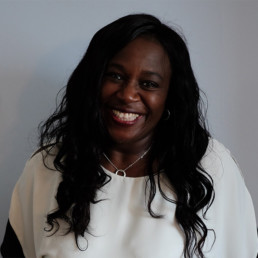
Written by Audrey Pantelis
Audrey Pantelis is an associate coach, consultant and trainer. She is a former Headteacher of a Special Educational Needs and Disabilities school and a current Diversity, Equity and Inclusion consultant and leadership coach.
What does diversity mean to you? What about cultural diversity?
Often mentioned, usually at interviews where the interview panel will want you to know that you “know” about diversity. I would put diversity in the same bag as equality and equal opportunities. When I was a teacher, these words scared me. Not because I didn’t know what they meant, but because I couldn’t be sure that I was applying them to my delivery of the subjects that I was teaching. As I reflect on those early years, I know that I loved promoting difference – probably because as a black woman in a predominantly white world, I embraced difference. I have always loved any aspect of character that shows individuality in any shape or form and it may also answer why I love special educational needs pupils. I was a mainstream teacher before changing phase to SEND in 2008. I guess I thrive on the fact that despite difficulties, we can express our true selves; our true characters. Overcoming our difficulties is a strength and shows true resilience which is a value that I so admire. And we can bring this to any table we choose to come to.
I spoke at the #DiverseEd conference in Slough in January 2020 with @HeadsUp4HT and really enjoyed the set-up and the drive that came from meeting like-minded colleagues. There were a lot of groups and grassroots movements that I had not heard of before but there was something compelling about their missions and values that resonated with me. I came away from the conference pumped up and wondering how I could get more involved.
When lockdown took hold of our lives and all face-to-face meetings were on hold – I was informed that #DiverseEd would be a virtual event and asked if I would look at ‘Smashing Ceilings’. You may have heard of the ‘glass ceiling’ concept – defined as : “an unacknowledged barrier to advancement in a profession, especially affecting women and members of minorities”. From my lens, I would go so far as to say that as black women in the workplace we often have ‘concrete ceilings’ to contend with. The main difference being that at least you can SEE through glass and aspire for more – with concrete – that’s it!! This has been my experience. I have been let down, as we all are as we aspire to leadership positions, but for me it’s been very difficult to work out whether I was the wrong fit, or just plain wrong. When you add ethnicity into the mix – we could be here for a while, trying to work it out.
Cultural diversity is a form of appreciating the differences in individuals. The differences can be based on gender, age, sex, ethnicity, sexual orientation, and social status. Schools have realized the value in acquiring a diverse workforce but what is not so well promoted or encouraged is the opportunity to rise and in turn, steer the culture to embrace ALL. The stereotyping and prejudices, if unchallenged, contribute to a culture that can promote sameness and prevent the celebration of skills, abilities, and experiences.
My fellow speakers: Naomi Ward @naomi7444, Patrick Ottley-O’Connor @ottleyoconnor spoke of their approaches in how we can establish culture (see clip below). Hannah Jepson @Hannahjep also spoke in the same session (Session 3)
https://www.youtube.com/watch?v=-Q7RWmbKONo
with me during Saturday’s virtual conference – #DiverseEd on Culture and Diversity – about Unconscious Bias: Recruitment and it really chimed with my own thoughts about how and why we recruit who we recruit. As a former Head of School, I was extensively involved in recruitment and always ensured that I fully considered candidates that weren’t anything like me – as Hannah stated “fit is important” – but it need not mean that I discounted potential employees that weren’t as I wanted. Like a jigsaw puzzle, we may have different shapes, but when we are placed together to make the bigger picture, no one worries about individual shapes, ONLY the bigger picture.
I believe that there is a lack of:
- comfortable, trusted strategic relationships
- positive strategic feedback
- opportunities to showcase breadth of skills and experience
If we don’t increase the amount of black and minority ethnic voices seen and heard at leadership and strategic levels, then how do we expect things to change? How do we smash those ceilings, glass or otherwise? Change means being uncomfortable – and the challenge doesn’t need to be aggressive but there needs to be clarity in the outcome with a plan and milestones to ensure that we are on the way to achieving that plan.
I am a big believer in action and we all have agency to make things happen. We are privileged in that respect – all of us. I’ve currently got the same excitement and passion bubbling up that I felt after the DiverseEd conference in January 2020. What I am aware of, in these post #BlackLivesMatters post #Covid-19 days, is that this is a REAL opportunity for change. A chance to do things differently. For too long we have said the same things and nothing has changed. We need allies, we need authenticity, we need curriculum reviews, we need visible leadership, we need programmes that enable our up-and-coming talent to remain in education and be the leaders of tomorrow, not become disillusioned as they are under-represented or oppressed again and again! We need the systems that already exist to be challenged to enable that change to take place. Yes – the conversations will be uncomfortable – but no one needs to get hurt! Let us LEARN from one another.
And….. my biggest take away from my session and indeed the conference itself, is that I would welcome a genuine level playing field. Merit is the only currency that we should be utilising to enable us to progress. Remember – “it’s difficult to be what you cannot see”.
I have focused on diversity from my own lens but the beauty of #DiverseEd conferences is the inclusion of LGBT, disability, gender, allyship viewpoints, as well as ethnic minorities. It’s such an important conversation – and in the current climate we MUST keep talking; and turning our words into actions. #MyDiverseEdPledge is: to use my voice to lead from where I am and to support others so that they can challenge their understanding of diversity and Black perspectives. What’s yours?
“It’s not our differences that divide us. It is our inability to recognise, accept and celebrate those differences”. Audre Lorde
Why Decolonise the Curriculum?
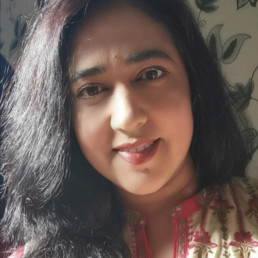
Written by Nuzhat Uthmani
Primary Teacher specialising in Global Citizenship and Antiracist education
I posed a survey through @Scotedpolls recently in which 25% of respondents said they did not feel they needed to decolonise the curriculum. Despite the majority of respondents expressing an interest in learning more, this statistic stuck with me. Is it because educators don’t understand what the term means or is it because they don’t see that there is an inherent problem with our curriculum? Let me address both these possibilities.
This time last year, even I had not heard of this term. Lockdown allowed me the freedom to invest in my own professional development and, as an advocate of global citizenship, I learnt more about decolonising the curriculum and its impact on the education system.
Traditionally, much of our curriculum is framed around the successes of the British Empire. It fails to acknowledge the contribution of communities and nations without which the empire would not have been as successful or wealthy as it once was. The stories of what those nations sacrificed as a result has been hidden away for centuries. Decolonising the curriculum refers to the inclusion of those stories, characters and contributions of others around the world that has impacted on the lives that we live today.
The Black Lives Matter movement is seeking to do this by raising awareness of how the UK gained from the slave trade while committing human rights abuses on those communities. However, as educators we must be mindful of not promoting a stereotypical view of certain groups. When we teach about slavery, we should be mindful to also teach about the contribution of Black, Asian and Ethnic Minorities to Science, the Arts and Politics for example.
I’m on a mission now to embed diversity across all the curriculum. It does not mean scrapping everything we know and teaching new topics, instead it involves a mind-shift from educators, ensuring the inclusion of diverse examples and resources in their daily teaching. It means ensuring that one narrative doesn’t dominate out curriculum but a diversity of perspectives and experiences are represented.
So, what about those in our community who feel nothing needs to change? My question to those is how inclusive is your practice? Holding standalone themed weeks is a box ticking exercise we need to move away from and embrace diversity in all that we do. If you rarely use books with characters of colour, if you only use examples from the Western world, then that is not inclusive to those learners who never see their heritage valued within the classroom, so please think again.
If you want to learn more please check my blog on Global Citizenship Education for lesson plans, research, and links to a variety of organisations who are all working towards establishing anti-racist education and can help you get started on your journey to offering a more inclusive and diverse curriculum.
A Reflection on My First Year of Teaching, Inspired by #DiverseEd

Written by Char Aramis
A primary NQT who uses they/them pronouns. Char blogs at transteacher.wordpress.com
Along with many others, I had the joy of listening (and tweeting!) along to the online #DiverseEd event on 17th October. When Hannah Wilson (@Ethical_Leader) asked me to write a blog response, it took me a while to decide on a subject, but we all know that the best way to improve is to reflect on what we’ve done before, so here is a reflection on my first year of teaching through a lens of diversity and inclusion.
I am going to use the things I have learned over the last few months to reflect on the things that I taught and the way that I taught them – specifically topic in terms 1, 2 and 4, because covering everything would make this blog far too long. However, I am still new to this – and to teaching! – so I welcome any additional points or suggestions you may have after reading this.
Because of the topics we studied, most of the issues here relate to race, ethnicity and nationality. For context, we were based in an area in the South West of England where nearly 85% of people were born in the British Isles. Of the rest, a good chunk hail from Poland, with others from Romania, the Philippines, Turkey and Bangladesh making up the rest. In my class, about half of the children had English as an additional language, including children from all of the countries listed above plus one or two others. Roughly two-thirds of them would generally be considered White.
So then, let’s get started. As I’m sure many schools did, we ran a Black History topic at the start of the year. Each year group focused on a significant Black person from history and we studied Nelson Mandela. We also briefly mentioned Martin Luther King Jr and Katherine Johnson in an end-of-term art project, which was displayed in the school for the rest of the year.
Now, if I recall correctly, these had been decided before I joined the school. Nonetheless, I don’t think I noticed at the time that thing that appears strikingly obvious to me now: none of these figures is from British history. Most of them, as is common in our studies of Black history in British schools, are from the United States and Nelson Mandela is of course from South Africa. I wonder if perhaps this is worse: I expect South Africa – a country that many of these pupils may never have heard of – seems much more remote and less relevant to them than America, which they at least engage with regularly through film and television.
We discussed racism and protests and fair treatment, but I certainly lacked the confidence and knowledge to address these subjects in the way they deserved (it was my first ever term of teaching). I do still feel that I would benefit from further training and resources to support this.
If I were to teach Black history as a topic again, I would definitely seek to choose a figure or subject that is more relevant to British history. The Bristol bus boycott or Windrush, for example. If I had to teach Nelson Mandela, I would link it back to racism in the UK around the same time – although we had no official segregation, I could teach about Britain before the Race Relations Act(s) and cases such as that of the marriage between Seretse Khama and Ruth Williams.
Our term 2 topic was extreme weather, specifically tropical storms. We focused on tornadoes and Kansas because we linked this to The Wizard of Oz. There was essentially no representation of any under-represented groups here – focussing for the moment on the topic teaching and not any subjects that are or could be discussed in relation to the book.
In the interests of allowing children to be seen in our curriculum and broadening pupils’ geographical knowledge beyond “the West” (I notice that the National Curriculum for KS2 only requires geographical study of regions of “the United Kingdom, … a European country, and … North or South America”), we perhaps could instead have looked instead at the Philippines, Bangladesh or the Pacific Islands (one child in the class was from Melanesia), which can also experience tornadoes, typhoons and cyclones. The difficulty here I think would be in deciding whether to focus on one over the others and if so, which one. Additionally, it would have been very specific to my class and much less relevant to the parallel classes in the year group. However, it could have been an opportunity for certain pupils to talk about the countries their families come from and perhaps teach their peers something of the language they use at home.
In term 4, we studied the Amazon Rainforest. I had planned a lesson on the history of the major city of Manaus, including its (pre-)colonial history and the impacts of the rubber industry, but I never got a chance to deliver it because we closed for lockdown. This is a subject which, I’m sure, deserves more than one lesson but the focus of our topic was actually on the physical geography – rivers and rainforests – as well as map work with a little human geography squeezed in.
I never fully finished the plan for this lesson so it’s difficult to evaluate it, but if I were to come back to this topic, I think it is worth considering the perspective from which I tell this history. It is important to show the effects that the arrival of Europeans had on indigenous populations and their home, and to consider the way they were treated. I do think I would probably need some support to do that topic justice.
There is an awful lot more to be considered regarding both the content and approach of my first year of teaching but that will have to wait for future blog posts – probably over on my own blog. Thank you for reading – any comments, feedback or questions are welcomed and encouraged.
Interactive Diversity Calendar 2021
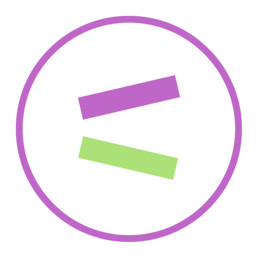
Written by Dual Frequency
Dual Frequency is a teaching resource provider that seeks to promote dialogue in relation to inclusion
This December, Dual Frequency is thrilled to share with you a brand new interactive diversity calendar that can be used in schools, education settings and other organisations to ensure you never miss a significant date in the EDI calendar.
Why is the diversity calendar important?
Because diversity matters, every single day! The more we immerse ourselves in diverse groups, the more we will be able to celebrate positive representation of these groups, and the richer our communities become.
How can you implement the diversity calendar within your organisation?
The diversity calendar includes a mixture of equality, diversity and inclusion related events along with key dates. This is not intended as an exhaustive list. At a glance you can see the key dates that are listed each month, click the date to be signposted to a resource and more information, plus suggestions of how you can celebrate the date.
How does the colour code in the diversity calendar 2021 work?
The calendar is colour coded to the strands of the Equality Act 2010. It is important to value everybody’s contribution to society all year round: far too many communities are so regularly overlooked in the Gregorian calendar. By focusing on the protected characteristics that fall under the Equality Act, our hope is these communities will no longer be overlooked but celebrated in contrast.
If you require the calendar in a different format, such as large text or on an (accessible) yellow background, then let us know and we will do our best to meet your requirements.
How do I get my calendar?
Download yours right now by clicking this link: https://www.dualfrequency.co.uk/diversity-and-inclusion-calendar-2021
If you are in a position to make a donation for your calendar, then we appreciate this. It helps to keep a grassroots organisation like Dual Frequency running and makes a huge difference to our community fund which ensures we can pay our contributors for their time and efforts.
Lest We Forget
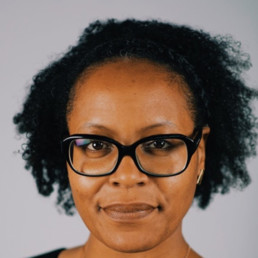
Written by Angie Browne
Education leader and founder of Nourished Collective. Author of Lighting the Way: The Case for Ethical Leadership in Schools
I have been busier than ever lately, which is a great problem to have, but as I was explaining to a group of school leaders this week, it’s also a sobering problem to have. Sobering because most of my work comes from supporting organisations who are embracing Diversity, Equity and Inclusion in the wake of the murder of George Floyd on May 25th 2020 in Minneapolis, Minnesota.
As I am going about my work, a refrain that repeats itself over and over is ‘lest we forget’. For most of us, ‘lest we forget’ has come to have meaning through commemorative war services, services honouring soldiers that have fought and died. However, the phrase, with biblical roots, is generally attributed to Rudyard Kipling’s usage in his poem ‘Recessional’.
It seems curious to have landed on this phrase, used to celebrate British imperial power and rue its demise by Kipling. Curious because I now use it with such de-colonising intent. But, the mind does strange things and perhaps, because I am an English teacher, I so often find myself with fragments of phrases echoing about the chamber of my mind with no direct realisation of the connections being made in there, the relevance to events past and present.
Inheritance, legacy and leaving the world in better shape than I found it are such important concepts for me. I feel grateful to my ancestors daily, seek to be a good ancestor as much as I can and work in ways that allow me to live out an ambition of leaving behind something ‘good’.
I cannot read ‘Dulce et Decorum Est’ without it bringing a lump to my throat. Who is not haunted by the final lines of the poem? Every single time I taught this poem the urgency of English teaching, of education and of creating a world in which our young were not sent to senseless deaths stirred me.
If you could hear, at every jolt, the blood
Come gargling from the froth-corrupted lungs,
Obscene as cancer, bitter as the cud
Of vile, incurable sores on innocent tongues,—
My friend, you would not tell with such high zest
To children ardent for some desperate glory,
The old Lie: Dulce et decorum est
Pro patria mori.
Who among us is not moved by the futility of youthful death articulated in Brooke’s ‘The Soldier’. With a boy of my own now, with young male cousins and nephews galore, imagining a past in which they were sent to a far off end is heart-breaking, and the urgency of creating a better future feels ever more important.
If I should die, think only this of me:
That there’s some corner of a foreign field
That is forever England. There shall be
In that rich earth a richer dust concealed;
A dust whom England bore, shaped, made aware,
Gave, once, her flowers to love, her ways to roam;
A body of England’s, breathing English air,
Washed by the rivers, blest by suns of home.
‘Lest we forget’ comes to me when I deliver Diversity, Equity and Inclusion work because we must not keep churning out the mistakes of the past, we must not forget those that have died in senseless circumstances.
‘Lest we forget’ means that I punctuate my work with the people and the places of those whose lives we commemorate as we learn about the limitations of our humanity and commit to doing better. It means that we remember Stephen Lawrence, the black British teenager who was murdered on April 22nd 1993 in a knife attack in London by a group of his contemporaries. It means that we recognise a bus stop in Eltham, a small corner of South-East London where lies a richer meaning, a responsibility we all have to do better.
As educators the detail about Stephen Lawrence and the boys who murdered him are essential. On the day of Lawrence’s murder he had been at school, his murderers were also of school age. It is vital to my work that we anchor details like this and not allow ourselves the get-out clause of distant proximity, of hazy memory, of foggy facts. Not allow this to obscure the urgency of the work we all know we need to undertake. Work that will ensure that no teenager dies alone at a bus stop, no teenager leaves our school gates and commits such a heinous and hate-filled crime.
‘Lest we forget’ means we remember Bijan Ebrahimi, a disabled Iranian refugee murdered in Bristol on the July 14th 2013 by a man called Lee James. Lee James had been, but a 17-year-old boy when the hate-fuelled campaign against Ebrahimi had begun. Let’s not shy away from the detail and let’s be clear on the facts. Ebrahimi was beaten, dragged into the street and set alight to by a mob who had lost their minds. There is a corner of a street in Bristol where lies a richer meaning, a responsibility we all have to do better.
‘Lest we forget’ means we anchor our work to a deeper purpose. We commit to the individuals whose deaths should make for a future in which it never happens again. In the ambition, the scope, the reach of the work we engage in to tackle homophobic, transphobic and biphobic behaviour we remember Ian Baynham. We say his name. We compute the detail of the brutal attack of a 62-year-old gay man on September 25th 2009 in Trafalgar Square. We acknowledge that his attackers were of school-age at the time of the attack that led to his death. We commemorate his life in a small corner of Trafalgar Square, acknowledging a richer meaning, a responsibility we all have to do better.
At the heart of Diversity, Equity and Inclusion work for me is a desire to be respectful enough to know who we remember and why. At a personal level, it’s about a past that stretches way back to times when my ancestors were enslaved, put on boats and then brutally put to work, my responsibility to them is to make the absolute most of my liberation. At a societal level, it’s about saying the names of the people who have given their lives needlessly, and collectively understanding what we want and need to do differently to create the kind of society we are all proud of. At an institutional level, it’s about being bold enough to give the lives of Stephen Lawrence, Bijan Ebrahimi, Ian Baynham and countless others meaning through the ambition of our work, our curriculum, our institutional cultures, our organisational structures and processes.
So, over the coming weeks and months, I urge you not to forget, not to get sloppy about who we remember, why we remember them and what our remembrance means for the future. I encourage you to take care and not slip into the laziness of statements like ‘when all the George Floyd stuff happened’. Remember, with care and attention to the details, the dates, the names and follow that golden thread of careful thought through to its manifestation in precise, detailed and luminary action in your work and your life.
How I recruited a diverse board and why it was important to me
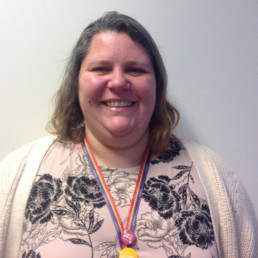
Written by Ninna Makrinov
Organisational Psychologist with over 20 years' experience in Higher Education. Currently the Chair of Governors at Water Mill Primary School.
On 30 September I Tweeted “I have been re-elected chair of governors at Water Mill Primary School. Such a pleasure to be able to serve. I’ve also recruited for all our vacancies and have the most visibly diverse board I have seen in the school this far. Thanks @Penny_Ten for your ideas.”
Here, (in a blog that was first published on the BAMEed website) I articulate why diversity on the board is important to me. And share some ideas that you might want to try when recruiting new members to yours.
A diverse board:
I am chair of governors in a small one form entry primary school in Birmingham. We are extremely proud of the diverse community we serve. It includes children from all over the world, many who arrive to school without speaking English. Because of our location near the University of Birmingham and Queen Elizabeth hospital, some of our children are only with us during their parent’s studies or work placements. When visiting the school, I see this fantastic diversity. And the children see it too! In our latest Ofsted report, the inspector quoted a child saying ‘We are all unique and great friends from different countries. We are like the united nations here’. We also have children who live permanently in the local area; they also come from diverse backgrounds.
Leadership has historically been another matter. When I joined the board we were all white; I brought some diversity, as I immigrated to the UK (for the second time) with my children and they joined the school with still little English. I did not question the lack of diversity then. It seemed the norm, educated white British people providing a service for the community. We cared, we wanted the best for the children. But we (or at least I) did not see how important it was the diversity of our community was visibly represented within the board.
I have been through a personal journey during the past 4 years that totally changed my focus. For years I have believed in multiculturalism, I have worked in international education, I have lived in three countries. Looking back, I was rather naïve in my beliefs. Maybe because in Chile, where I come from, racism is blatant I did not see it in the UK. I started attending an anti-racist pedagogies forum at work a couple of years ago, that changed my outlook. I will not delve into my process, I imagine it would bore a diverse audience to read about how I realised about my white privilege. I should have known!
Having a visibly diverse board is important to me because I realise I cannot serve a community I don’t understand. All voices need to be heard and mine is not more important than others. Our children will be able to see themselves in us, parents might trust us more. Our discussions will, I expect, be enriched by asking questions coming from different perspectives. I hope that recruiting a visibly diverse board is a starting point to diversifying our leadership, improving our policies and engaging in deep reflection. I genuinely value diversity, I have for some time; but I now know that diversity in leadership doesn’t happen by accident.
Recruiting diverse members:
Recruiting board members for school governance is a challenge in itself. I imagine I am not the only one who at some points has felt that I am begging for members. And we need to make sure we have the right skills set on the table. I know some boards achieve this by having specialised committees and big numbers. At Water Mill, we made a decision that the best governance solution for our school was to have a small board (9 members), with frequent meetings and (almost) no committees. We embarked on a skills development journey using the DfE’s competency framework. And we made a conscious commitment to recruiting diverse members. We also decided not to appoint unless we agreed of the value to the board.
As vacancies arose, we openly indicated that we were looking for diverse members. That was, I am sorry to say, not enough. The reason for this was obvious to me when I was delivering a confidence training session to university students and one of them openly discussed what she called the elephant in the room, all were women from ethnic minority backgrounds. She shared her experiences of discrimination and how she would not apply for a job in a place that was not already diverse, to avoid this. In her eyes, a recruitment pack that mentioned diversity was just saying ‘not for me’. How could we make our obviously white educated board the place for those who were not like us? I got advice on ideas to try and came up with some myself.
I still feel that our current diverse board is serendipitous. Three governors were elected by parents and I found my next door neighbour (and good friend) on Inspiring Governance. However, I hope some of the ideas I tried might help:
- Commit to diversity: Discuss diversity openly in your board. Create a list of the characteristics you ideally would want to have. Not all diversity if visible, but visible diversity can help demonstrate your commitment openly.
- Celebrate the diversity you already have: Think about how your board and/or school is already diverse. Share this and make it visible. Add diversity stories on webpages, for example. Our headteacher updated our webpage recently; I think it looks great.
- Ask for what you are looking for: Although I mentioned above that just adding a diversity statement was not enough, I still think this is needed. Make sure it includes your reasoning; I changed ours from ‘we welcome applications from BME backgrounds” to “We would particularly welcome nominations from parents from diverse ethnic backgrounds. We are committed to the diversity of our school; we would like our governing board membership to demonstrate this.”
- Target specifically for the diversity you need: I used Inspiring Governance and Governors for Schools to support my search (if you have not tried them, do!). Inspiring Governance has a shortlisting system. In this occasion we wanted men and minority members; I did not contact any white women in my search. The vacancies were open to all, but I did not reach out to them.
I am looking forward to continuing this journey. A diverse board is not only about recruitment, but also about retention. This will require us to effectively listen to each other, value diverse opinions, ensure everyone feels like a valued member. I start this year with 4 new members, almost half of my board. We are integrating opportunities to get to know each other and training sessions during our meetings. My main focus is to build each member’s confidence in their role. I will know that I have succeeded when others are ready to step up and take the responsibility of chairing the board. I love my role, but I believe my board is better served by diversity in leadership.

